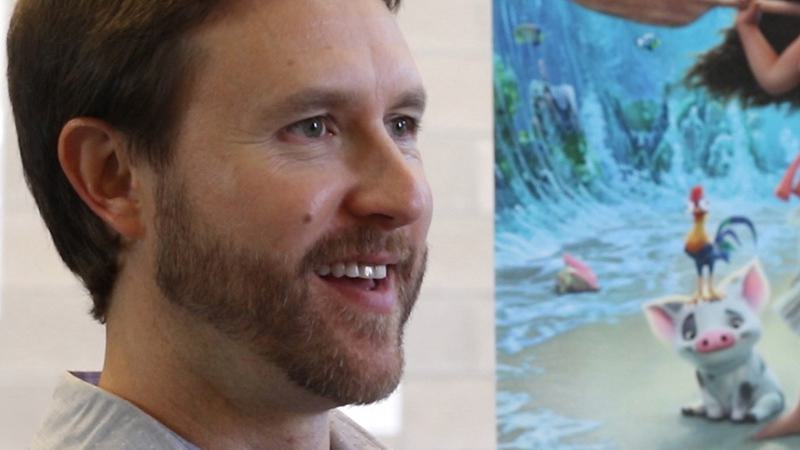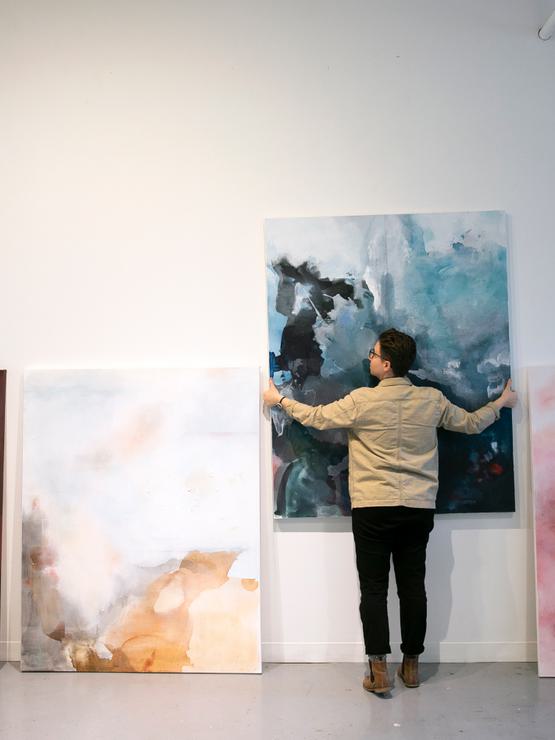
Since joining Disney Animation as an intern in 1993 — and coming on full-time the following year as a clean-up artist for Pocahontas — Andy Harkness has crafted a career making some of your favorite animated movies, including Mulan, Lilo and Stitch, Tangled, and Zootopia.
Most recently, Harkness, who won an Emmy for his production design in the Disney short Prep & Landing, and who illustrated the book Bug Zoo, worked as art director for Disney’s critically hailed film Moana, an animated feature about a teen adventuring the Pacific. Harkness, who studied Illustration at Columbus College of Art & Design in 1991 – 1993, recently visited campus for a special presentation and Q&A with students about his new movie and his career. Harkness, who also spoke with the Columbus Dispatch and “Good Day Columbus,” joined us for a conversation about his formative time as a student at CCAD, and where his career path has taken him in the years since.
You took a very deliberate, 10-year path to becoming an art director. Can you describe that?
I was in cleanup animation on Pocahontas and The Hunchback of Notre Dame. … One night I was there and — this actually happened during my internship — I walked into an office, the door was open, lights were on, and there were these color keys all over the walls. It was the office of Ric Sluiter, who art directed Mulan and Lilo and Stitch. I didn’t know what I was looking at, but it was a game-changer. Whatever that was, I had to do. It was art direction. In talking with a few people, they said a good step would be layout, where you start learning about shape language, cinematography. … (Sluiter) championed me to put my work in and try for a position (as production designer). Two weeks after I got that position, the studio shut down and the movie was canceled. That happens, that’s part of the business. That’s when I came out and went to Sony for two years. I was art director on a movie called Open Season. That was a trial by fire. It was the first 3D movie I ever worked on, my first time working in color — and I didn’t tell them I didn’t know color.
(After returning to Disney) … I worked on other films there, shorts — one called Glago’s Guest, I art directed, and Prep & Landing for ABC ... I did some art direction on Wreck it Ralph and now, Moana. It took a long time, but it was worth it. I wouldn’t have traded any of those years in. You learn so much being in those different roles.
How did your experiences at CCAD inform the work you do today?
I remember being in painting class and we were painting – it was cardboard boxes sitting in front of a cardboard background on a cardboard thing and (the instructor) had a light. So, there was one light that was set up and we had that and there was a little bit of ambient light — it was cool light coming from the window. We’re like “oh my god, this is going to be the most boring painting setup ever.” The challenge was to really study how many different colors and values of colors were in what we were looking at. He told us to slow down, go slow and really study it. Color next to color next to color. That’s stayed with me until this day. Color is only what it is based on what the color is next to it. So, when I’m doing a sky and a cloud in the sky, I always still think of that class.
In illustration class, the very first day, I remember the teacher saying that you need to be able to understand the story and illustration in two seconds or you’re going to lose your audience. Animation is very similar. Some shots are less than two seconds and the read on screen has to be very, very clear.
You’ve worked in 2D and 3D animation and now you’ve published a book. Is there a form that you prefer?
I always love books. I think I’ll be doing that until my hands don’t work anymore, until I’m 100 years old. Eventually, I’d love to do that full-time. That’d be the real goal.
What advice do you have for students who aspire to be where you are in your career?
It’s very, very important to listen to that quiet little voice in your heart. That is what should drive you. That’s the most important thing. To be successful in animation and have a long career, you have to love art. That’s it. Loving Disney is, like, second. "Love art" is first.
________
Read more in our series CCAD Means Success.
________
Learn more about CCAD or apply here.
